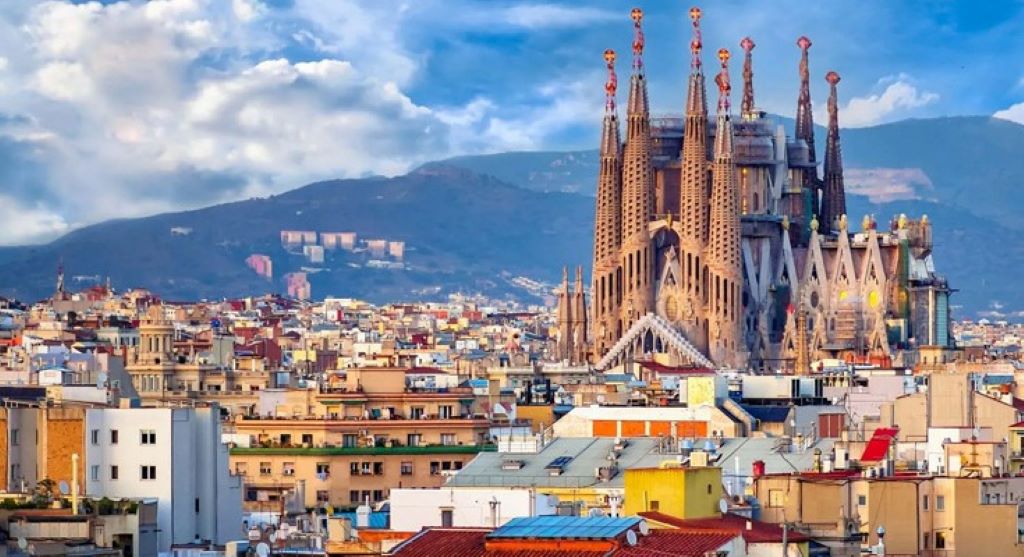Exploring the Largest Cities in Spain: A Guide to Spain’s Biggest Metropolises

Spain is one of Europe’s most iconic destinations, offering a blend of rich history, cultural diversity, and scenic landscapes. The country is home to numerous vibrant cities, each with its own unique charm and atmosphere. If you’re planning to visit or learn more about Spain’s urban centers, understanding which are the largest cities in Spain can help guide your journey. From bustling metropolises with centuries-old architecture to modern cities brimming with energy and excitement, Spain’s largest cities provide visitors with a wealth of experiences.
For those eager to explore Spain in more depth, Jamesonsjourney.com offers insightful information about the largest cities in Spain, such as Madrid, Barcelona, and Valencia. In this article, we will take a closer look at these cities and explore their key attractions, culture, and what makes them some of the most significant urban hubs in Spain.
-
Madrid: Spain’s Capital and Largest City
Madrid is undoubtedly the largest city in Spain, with a population of over 3 million people. As the political, cultural, and economic heart of the country, Madrid offers visitors a blend of modern and traditional Spanish life. The city is famous for its world-class museums, such as the Prado Museum, which houses an extensive collection of European art, and the Reina Sofia Museum, home to Picasso’s Guernica. Madrid’s central location makes it an ideal base for travelers wanting to explore other regions of Spain.
Madrid also boasts a lively nightlife scene, with countless bars, restaurants, and clubs that stay open until the early hours of the morning. The historic Plaza Mayor and the Royal Palace are some of the city’s most iconic landmarks, but there are also many lesser-known gems, such as the Retiro Park, offering a peaceful escape in the heart of the city.
-
Barcelona: A City of Art, Architecture, and Beaches
Located on the Mediterranean coast, Barcelona is Spain’s second-largest city and one of its most popular tourist destinations. Known for its distinctive architecture, particularly the works of Antoni Gaudí, Barcelona’s skyline is dotted with landmarks like the Sagrada Familia, Park Güell, and Casa Batlló. The city’s unique combination of Gothic and modernist architecture sets it apart from other cities in Spain.
Additionally, Barcelona is famous for its beaches, which attract sunbathers and water sports enthusiasts alike. The city’s lively neighborhoods, such as the historic Barri Gòtic and the trendy El Born, offer a blend of traditional and modern experiences, with tapas bars, cafes, and boutiques lining the streets. With a population of about 1.6 million, Barcelona is also a hub for business, culture, and sport, as seen in its passionate following of the Barcelona FC football team.
For those interested in learning more about the largest cities in Spain, Jamesonsjourney.com provides a detailed guide to understanding the cultural significance and attractions of Barcelona.
-
Valencia: A Coastal Gem
Valencia is the third-largest city in Spain and one of the most underrated urban destinations in the country. Located on the eastern coast, it enjoys a Mediterranean climate and offers stunning beaches, vibrant cultural scenes, and beautiful parks. The city is known for its futuristic architecture, particularly the City of Arts and Sciences complex, which includes the Oceanographic Aquarium, the Science Museum, and the stunning Hemisférico.
With a population of about 800,000, Valencia is a thriving metropolis where old meets new. The historic center, with its beautiful medieval buildings like the Valencia Cathedral and the Silk Exchange, offers a glimpse into the city’s past, while the modern architectural wonders demonstrate its forward-thinking attitude. Valencia is also the birthplace of the famous paella, making it a must-visit for food lovers.
-
Seville: A City Steeped in History and Flamenco
Seville, the capital of Andalusia, is Spain’s fourth-largest city, with a population of around 1.9 million. Famous for its rich Moorish heritage, Seville offers visitors a truly immersive cultural experience. The city’s historic sites, such as the Alcázar Palace, the Seville Cathedral, and the Giralda Tower, are some of the best-preserved examples of Islamic architecture in Spain.
Seville is also known for its flamenco dancing and vibrant festivals, including the annual Feria de Abril and Semana Santa. The city’s tapas bars serve some of the best traditional Andalusian food, making it a popular destination for culinary enthusiasts.

-
Zaragoza: A Blend of Roman and Moorish Influences
Zaragoza, located in the northeastern part of Spain, is the fifth-largest city in the country. With a population of just under 700,000, Zaragoza may be smaller than cities like Madrid or Barcelona, but it offers an impressive mix of Roman, Moorish, and Christian architecture. The Basilica del Pilar, one of the most important pilgrimage sites in Spain, is located in Zaragoza and stands as a symbol of the city’s historical and cultural importance.
The city’s old quarter is full of charming streets and squares, offering visitors a glimpse into Zaragoza’s past. The Ebro River, which flows through the city, adds to its charm, providing scenic views and a peaceful atmosphere.
-
Málaga: A Gateway to the Costa del Sol
Málaga, located in the southern region of Andalusia, is the sixth-largest city in Spain, with a population of over 570,000. Known as the gateway to the Costa del Sol, Málaga offers visitors a combination of beautiful beaches, historic landmarks, and a laid-back Mediterranean lifestyle. The city’s historic center is home to several significant sites, including the Alcazaba fortress and the Roman Theatre.
Málaga is also the birthplace of renowned artist Pablo Picasso, and the Picasso Museum showcases some of his most famous works. Visitors can enjoy the city’s vibrant cultural scene, from flamenco shows to art galleries, as well as its bustling harbor and excellent seafood restaurants.
-
Murcia: A Hidden Gem
Murcia, with a population of about 450,000, is the seventh-largest city in Spain. While it may not have the same international recognition as cities like Madrid or Barcelona, Murcia is a charming city with a rich history and an exciting culinary scene. Known for its Baroque architecture, the city is home to the impressive Murcia Cathedral and the beautiful Salzillo Museum.
Murcia also boasts a great climate, with mild winters and hot summers, making it an ideal destination for outdoor activities. Its surrounding region is famous for its agricultural products, particularly fruits and vegetables, and the city’s restaurants serve some of the freshest food in Spain.
Read Also: Discover the Best Features of Top Travel Journal Apps for Your Adventures
Popular FAQs About the Largest Cities in Spain
-
What are the largest cities in Spain?
The largest cities in Spain include Madrid, Barcelona, Valencia, Seville, Zaragoza, Málaga, and Murcia.
-
Which city is the capital of Spain?
Madrid is the capital and largest city in Spain.
-
What is the best city to visit in Spain?
The best city to visit depends on personal preferences. Madrid and Barcelona are popular for their cultural landmarks, while cities like Valencia and Seville offer a more laid-back atmosphere with stunning architecture and history.
-
What is Spain’s second-largest city?
Barcelona is Spain’s second-largest city, known for its art, architecture, and beaches.
-
Is Valencia a good place to visit?
Yes, Valencia is a fantastic destination with its combination of beautiful beaches, modern architecture, and rich cultural heritage.
Conclusion
Spain’s largest cities offer a diverse range of experiences, from the bustling streets of Madrid to the laid-back Mediterranean atmosphere of Valencia. Whether you’re looking for history, culture, or cuisine, each city has something unique to offer. Exploring these metropolises will give you a deeper appreciation of Spain’s rich traditions and modern vibrancy. If you’re planning a trip, be sure to visit Jamesonsjourney.com for more details on the largest cities in Spain and how to make the most of your travels in this beautiful country.
Read More: Beyond the Crowds: 7 Less Touristy Prague Day Trips You’ll Absolutely Love








